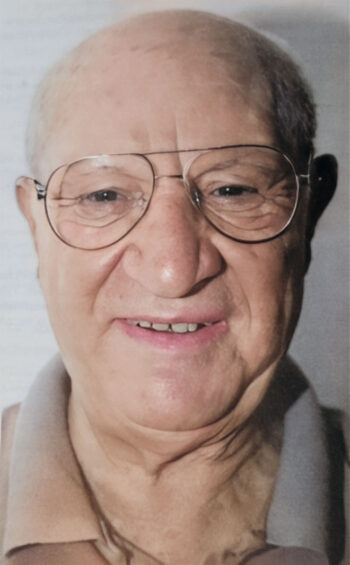Chasan, Shaul

Shaul Chasan was one of several Greek Jews deported to Auschwitz in April 1944 who all claimed to have worked at Bunker 2 in Auschwitz-Birkenau, dragging gassing victims from the gas chamber(s) to the cremation pit(s). There are many issues with his testimony:
- While orthodoxy maintains that Bunker 2 had four chambers of various sizes with one entry and one exit door each, and had several cremation pits nearby, Chasan mentioned only one chamber and one door, with only one pit nearby.
- He claimed that, when a huge pyre with hundreds of corpses was already burning, inmates kept throwing in more corpses, although such a conflagration could not have been approached without getting severely burned.
- The pit was supposedly “about four meters deep,” which would have quickly filled with water, preventing any fire to ever get ignited, considering that the groundwater level in that area was usually not much more than a meter beneath the surface – and during the rainy season of May and June even closer than that.
- Chasan insisted that the pyre “burned day and night,” although that was a violation of strict black-out orders to protect from air raids. Furthermore, the air photos of that time prove that no large-scale pyres existed in the area where Bunker 2 is said to have been.
- Twice Chasan claimed to have observed that trucks backed up to the pit and dumped a load of old people straight into the pit to be burned alive. If the fire was blazing at that time, the truck would have caught fire. If it wasn’t ablaze, then the people dumped into the pit wouldn’t have burned. Either way, his tale is evident nonsense.
- According to Chasan, the gas-chamber door in Crematorium III was a “heavy door made of iron,” but all gastight doors and other doors ever made and installed at Auschwitz were made of wood.
- He claimed that the gas chamber of Crematorium III could accommodate 2,500 people, hence a packing density of 12 people per square meter, which is ludicrous.
- Chasan’s description of the Zyklon-B introduction columns contradicts the orthodoxy’s version, which insists that these columns went all the way to the floor, and that the pellets were retrievably lowered into that column in some container. Chasan insisted, however, that he knew it better:
“A latticework shaft came down from each opening. […] And the gas, in the form of little pellets, was thrown down the hollow shaft. […] A small space was left [between the shaft and the floor] so that you could clean there. We poured water on the floor and swept up what remained of the pellets. We always poured water there […].”
- After the gassing, instead of ventilating the gas before opening the door, he insisted that the door was opened right away, and only then was the ventilation started. This was so dangerous, Chasan insisted, that “we had to run for our lives.”
- He claimed that the dead gassing victims were “standing like statues,” which is physically impossible.
- He insisted that they used fat corpses to burn skinny ones, and that “every two or three days, we removed the bones from the furnaces,” when in fact coke was used to burn corpses, not the body fat of well-nourished inmates. Furthermore, bones burn to ashes in cremation furnaces, so no one ever had to remove them, and the ashes of a cremation were removed after every single cremation.
This is only the tip of the iceberg of Chasan’s fairy tales. (For more details, see Mattogno 2022e, pp. 56-73.)

You need to be a registered user, logged into your account, and your comment must comply with our Acceptable Use Policy, for your comment to get published. (Click here to log in or register.)